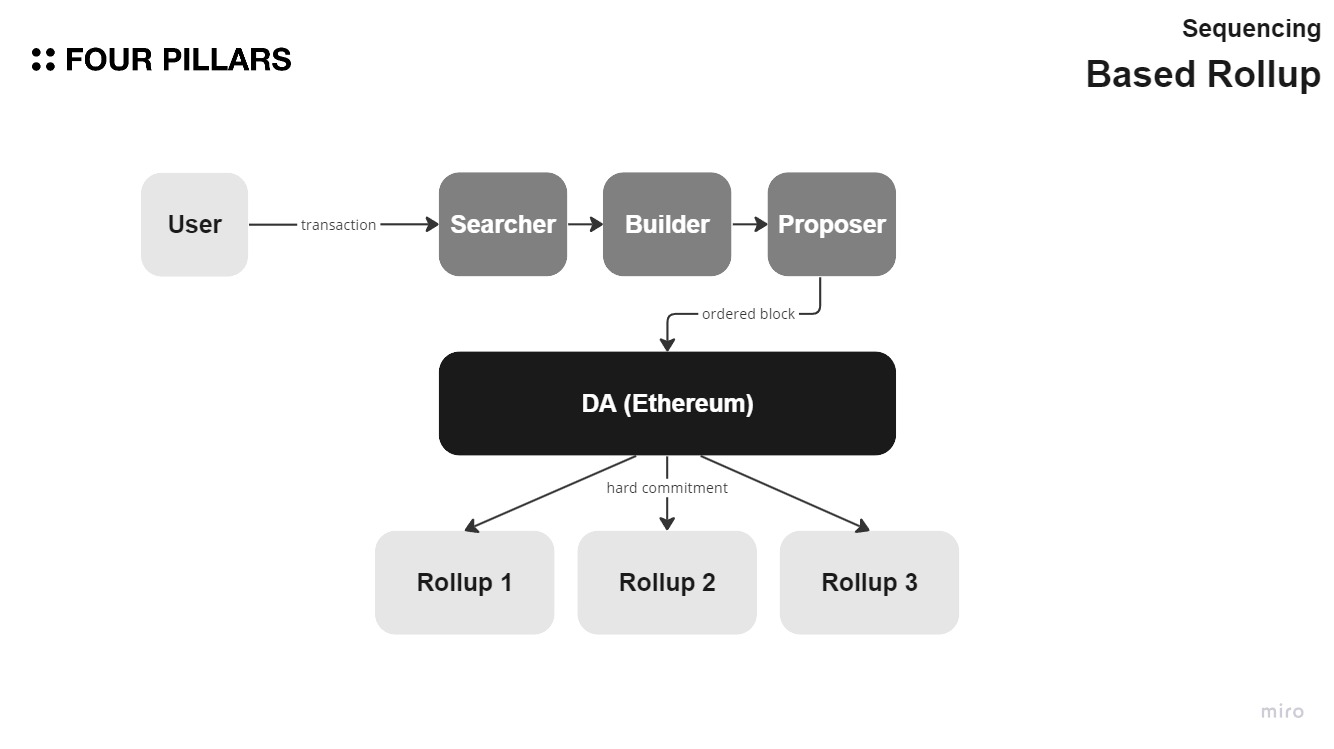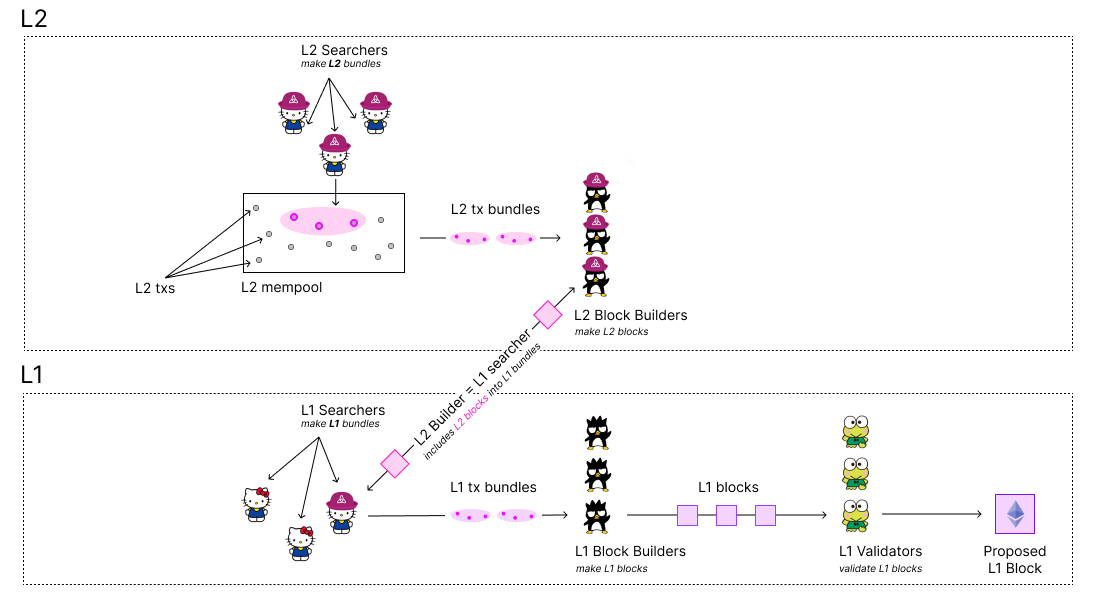Based rollups
Key Takeaways
- Based rollup delegates L2 sequencing to the searchers, builders, and proposers that already exist within the Ethereum network rather than introducing a new entity for sequencing.
- It is the most decentralized way to sequence the rollup network and has the advantage of a strong liveness guarantee. However, capturing the MEV value on the L2 level is hard, and there's a scalability bottleneck as sequencing is carried out on Ethereum.
1. Overview

Based rollup is a concept proposed by Justin Drake, a researcher at the Ethereum Foundation, referring to a rollup network where the base layer (L1, in most cases Ethereum) is in charge of sequencing. Searchers, builders, and proposers that exist in the Ethereum network perform sequencing for the based rollup. It can take full advantage of the existing block-building pipeline in the Ethereum network, making it the most decentralized and benefiting from Ethereum's liveness.
2. Transaction Lifecycle

While Justin Drake's ethresearch article does not mention a specific transaction lifecycle, if you refer to the ethresearch article written by Taiko, the transaction lifecycle of based rollups is as follows:
- L2 searchers make L2 bundles from L2 users’ transactions.
- L1 searchers also can be L2 block builders, and they sequence transactions and bundles to make full L2 blocks.
- L1 searchers include as-generated full L2 blocks into L1 bundles and submit toe L1 block builders.
- The subsequent process is identical to the existing Ethereum network.
Also, there is a great article by NashQ from Rollkit on the mental model to understand the sequencing process in based rollups. It shows various examples of based rollups with different types (e.g., pessimistic/optimistic/zk, centralized/decentralized aggregator/header producer).
3. Sequencing
One of the key features of Based rollup is that various players involved in Ethereum network's block building (e.g., searchers, builders, proposers) perform sequencing. Since it uses the existing block-building process, it has the advantage of being very simple to implement technically. Other advantages include:
- Decentralization: Anyone who can see the Based rollup's mempool can participate in the sequencing process without permission.
- Liveness: It can directly benefit from the liveness of the Ethereum network.
- No need for tokens: It can decentralize the sequencing process even without a native token.
However, some drawbacks come with depending on Ethereum for sequencing:
- MEV flows to L1: Since players in the Ethereum network participate in sequencing, the MEV profit of based rollups flows to L1, not L2.
- Scalability limit: As Sequencing and Data Availability (DA) are handled within the Ethereum network, scalability can be limited.
4. Settlement
Based rollup can utilize both fraud proof and validity proof methods. However, since anyone can participate in sequencing and no roles are specifically dedicated to fraud proof or validity proof, there is an open design space regarding this (See: Redefining Sequencers: Understanding the Aggregator and the Header Producer). The same goes for transaction finality. Projects like Astria may provide soft finality as soon as sequencing is complete, but in the case of based rollup, the light/full nodes in the L2 network will need to establish their view well.
5. Use Cases
The most prominent example is the Type-1 zkEVM project Taiko, which plans to use the based rollup method. Teams who value directly benefiting from the decentralization and liveness of the Ethereum network rather than immense scalability, will find it appropriate to choose a based rollup method for sequencing.
At the end of his proposal, Justin Drake also wrote a statement saying, "Base can achieve tokenless decentralization by becoming based."
6. Resources
- Based rollups—superpowers from L1 sequencing by Justin Drake (Ethereum Foundation)
- MEV for “Based Rollup” by Lisa (Taiko)
- Based rollup: Sequenced by Ethereum by 100y (Four Pillars)
- Redefining Sequencers: Understanding the Aggregator and the Header Producer by NashQ (Rollkit)
